Abstract
Data on respiratory symptoms and pulmonary function were obtained for 2736 Portland cement plant workers and 755 controls. Personal dust samples contained a geometric mean concentration of 0.57 mg/m3 for respirable dust and 2.90 mg/m3 for total dust. Cement workers and controls had similar prevalences of symptoms, except that 5.4% of the cement workers had dyspnoea compared with 2.7% of the controls. The mean pulmonary function indices were similar for the two groups. Among cement plant workers, the prevalence of chronic phlegm increased with tenure whereas the prevalence of wheezing increased with both tenure and current dust level. Other symptoms and pulmonary function indices were not significantly related to exposure.
Full text
PDF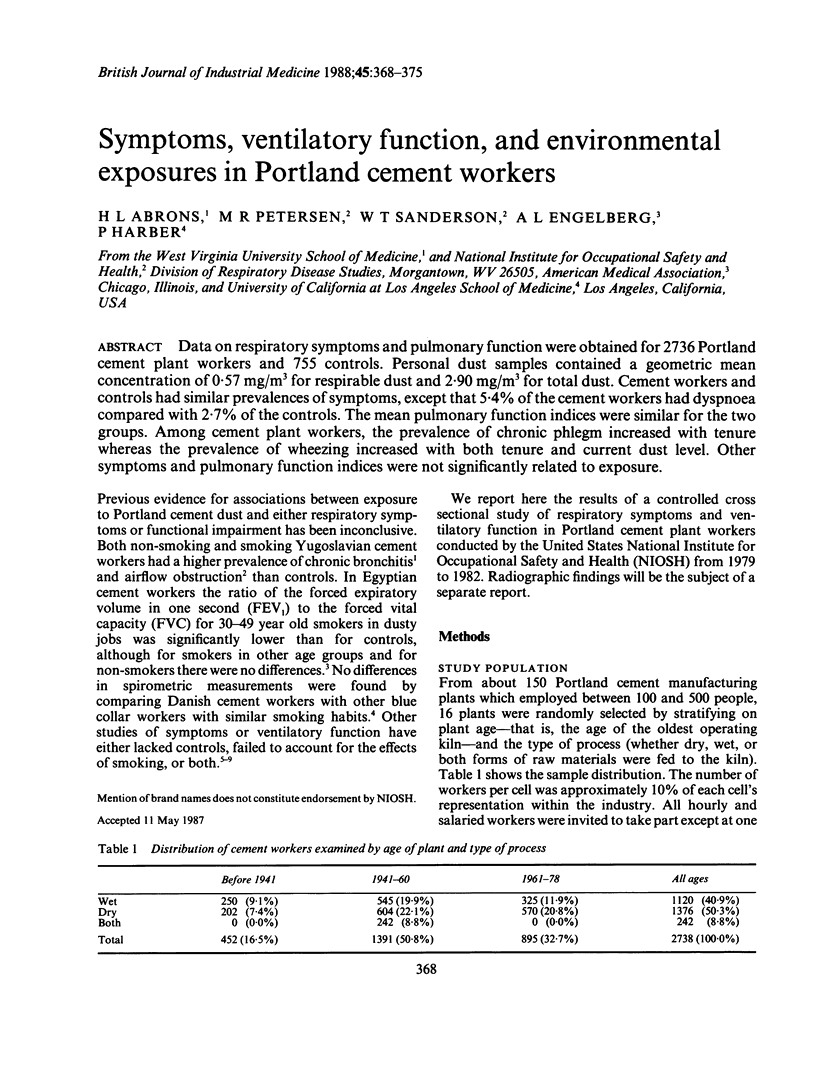
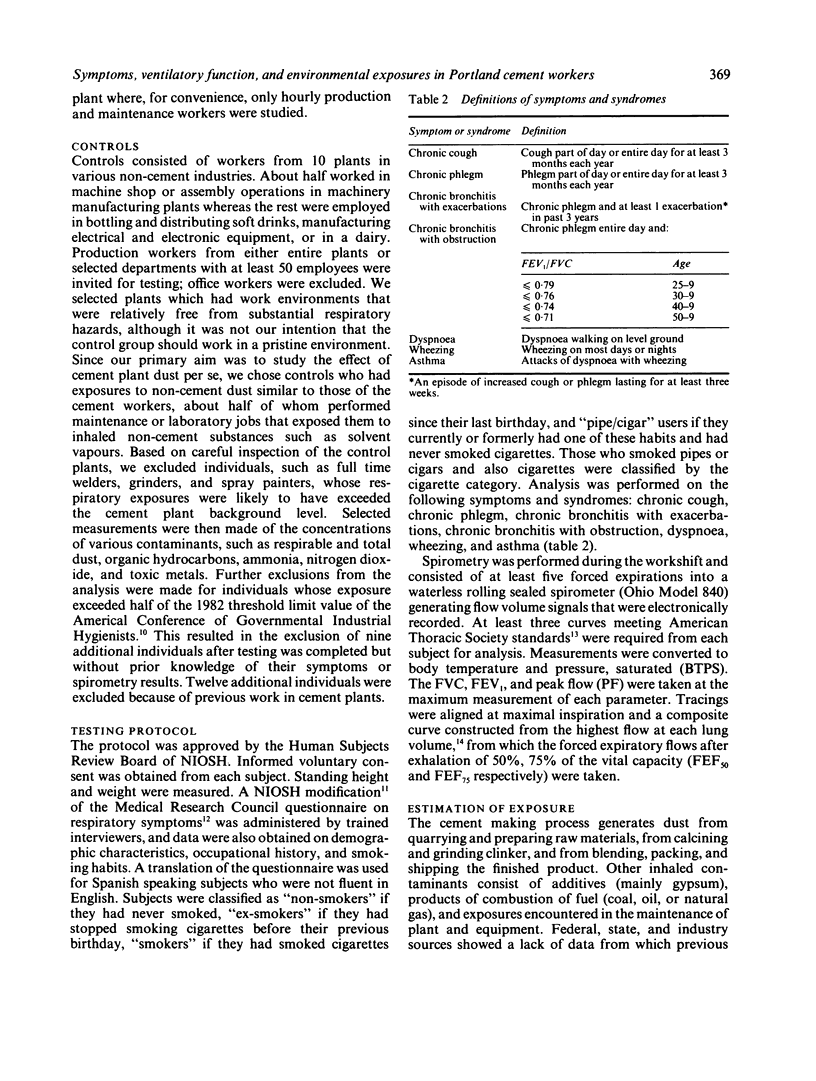
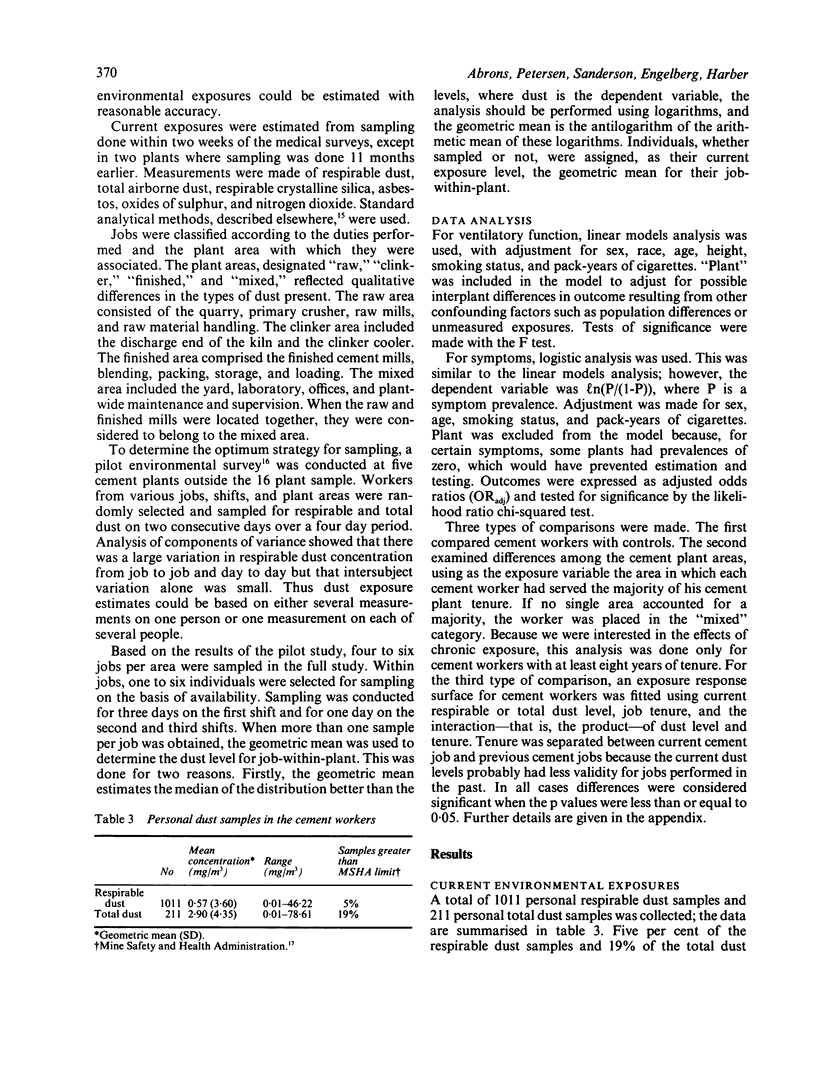
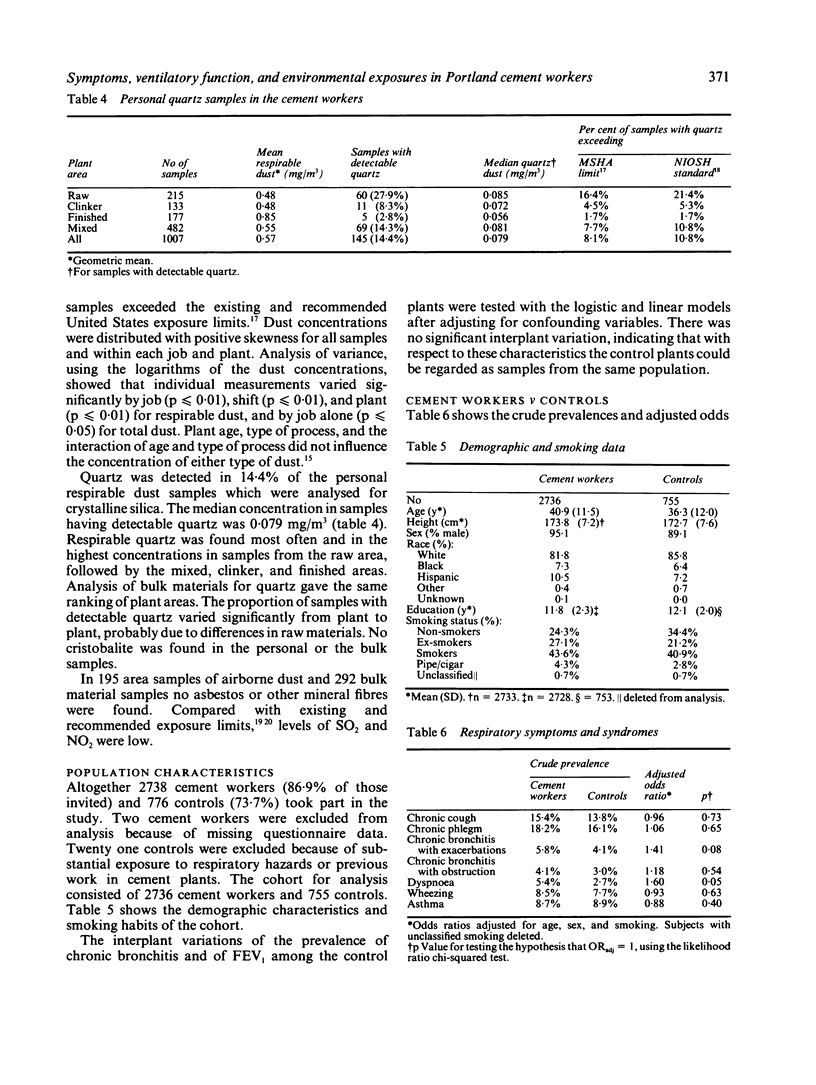

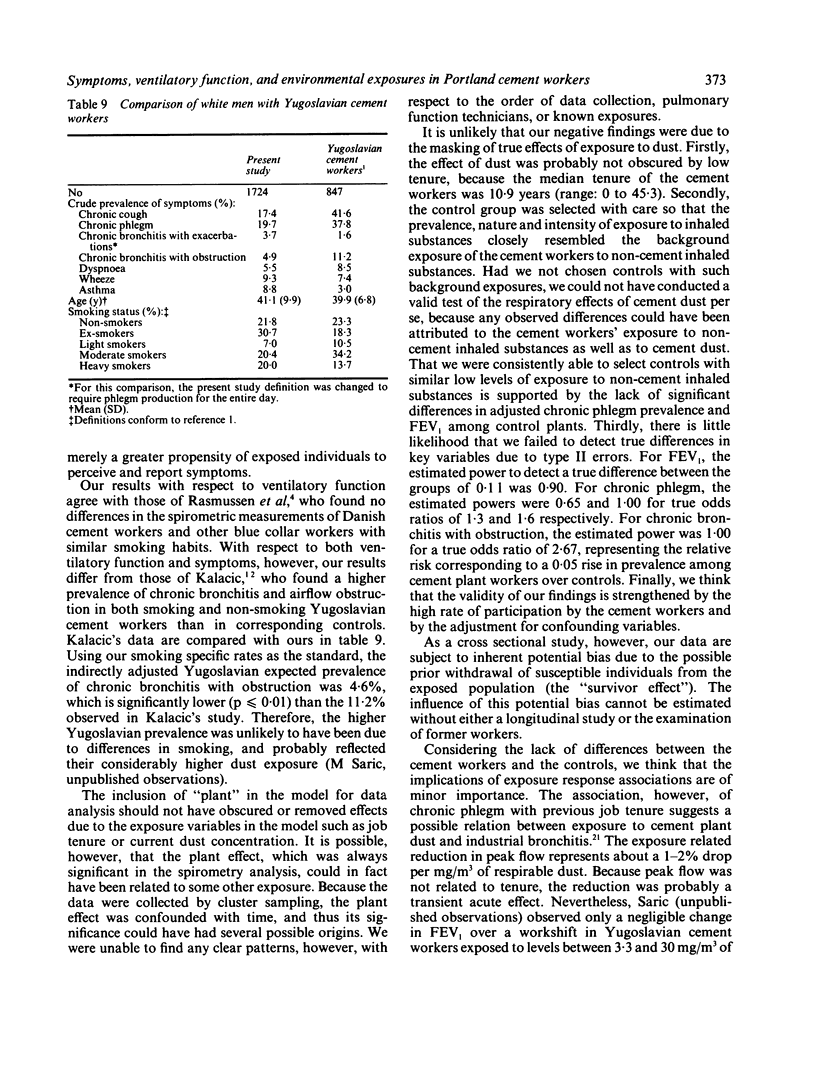

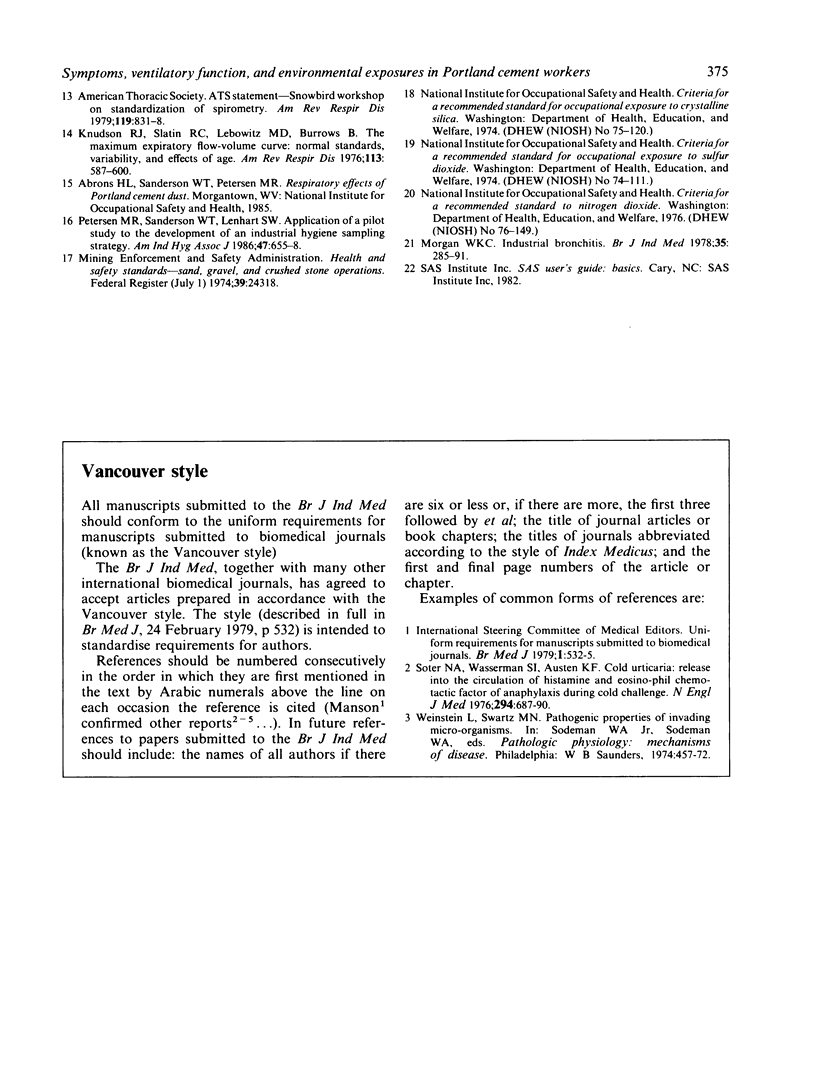
Selected References
These references are in PubMed. This may not be the complete list of references from this article.
- GIULIANI V., BELLI R. Sul rischio professionale dei cementisti; indagini clinico-casistiche. Med Lav. 1955 Dec;46(12):715–724. [PubMed] [Google Scholar]
- JENNY M., BAETTIG K., HORISBERGER B., HAVAS L., GRANDJEAN E. [Industrial medical examinations in cement factories]. Schweiz Med Wochenschr. 1960 Jun 25;90:705–709. [PubMed] [Google Scholar]
- Kalacić I. Chronic nonspecific lung disease in cement workers. Arch Environ Health. 1973 Feb;26(2):78–83. doi: 10.1080/00039896.1973.10666228. [DOI] [PubMed] [Google Scholar]
- Kalacić I. Ventilatory lung function in cement workers. Arch Environ Health. 1973 Feb;26(2):84–85. doi: 10.1080/00039896.1973.10666229. [DOI] [PubMed] [Google Scholar]
- Knudson R. J., Slatin R. C., Lebowitz M. D., Burrows B. The maximal expiratory flow-volume curve. Normal standards, variability, and effects of age. Am Rev Respir Dis. 1976 May;113(5):587–600. doi: 10.1164/arrd.1976.113.5.587. [DOI] [PubMed] [Google Scholar]
- Maestrelli P., Simonato L., Bartolucci G. B., Gemignani C., Maffessanti M. M. Distribuzione della pneumoconiosi e della bronchite cronica neglia addetti alla produzione del cemento. Med Lav. 1979 May-Jun;70(3):195–202. [PubMed] [Google Scholar]
- Morgan W. K. Industrial bronchitis. Br J Ind Med. 1978 Nov;35(4):285–291. doi: 10.1136/oem.35.4.285. [DOI] [PMC free article] [PubMed] [Google Scholar]
- POPOVIC D. PRILOG POZNAVANJU PNEUMOKONIOZE RADNIKA U INDUSTRIJI CEMENTA. Arh Hig Rada Toksikol. 1964;15:353–376. [PubMed] [Google Scholar]
- Petersen M. R., Sanderson W. T., Lenhart S. W. Application of a pilot study to the development of an industrial hygiene sampling strategy. Am Ind Hyg Assoc J. 1986 Oct;47(10):655–658. doi: 10.1080/15298668691390395. [DOI] [PubMed] [Google Scholar]
- Petersen M., Castellan R. M. Prevalence of chest symptoms in nonexposed blue-collar workers. J Occup Med. 1984 May;26(5):367–374. doi: 10.1097/00043764-198405000-00011. [DOI] [PubMed] [Google Scholar]
- Rasmussen F. V., Borchsenius L., Holstein B., Sølvsteen P. Lung function and long-term exposure to cement dust. Scand J Respir Dis. 1977 Oct;58(5):252–264. [PubMed] [Google Scholar]
- Soter N. A., Wasserman S. I., Austen K. F. Cold urticaria: release into the circulation of histamine and eosinophil chemotactic factor of anaphylaxis during cold challenge. N Engl J Med. 1976 Mar 25;294(13):687–690. doi: 10.1056/NEJM197603252941302. [DOI] [PubMed] [Google Scholar]
- Vyskocil J. Dlouhodobé sledování vývoje vleklé bronchitidy u cementárenských delníků. Vnitr Lek. 1968 Apr;14(4):341–348. [PubMed] [Google Scholar]
- el-Sewefy A. Z., Awad S., Metwally M. Spirometric measurements in an Egyptian portland cement factory. J Egypt Med Assoc. 1970;53(2):179–186. [PubMed] [Google Scholar]


